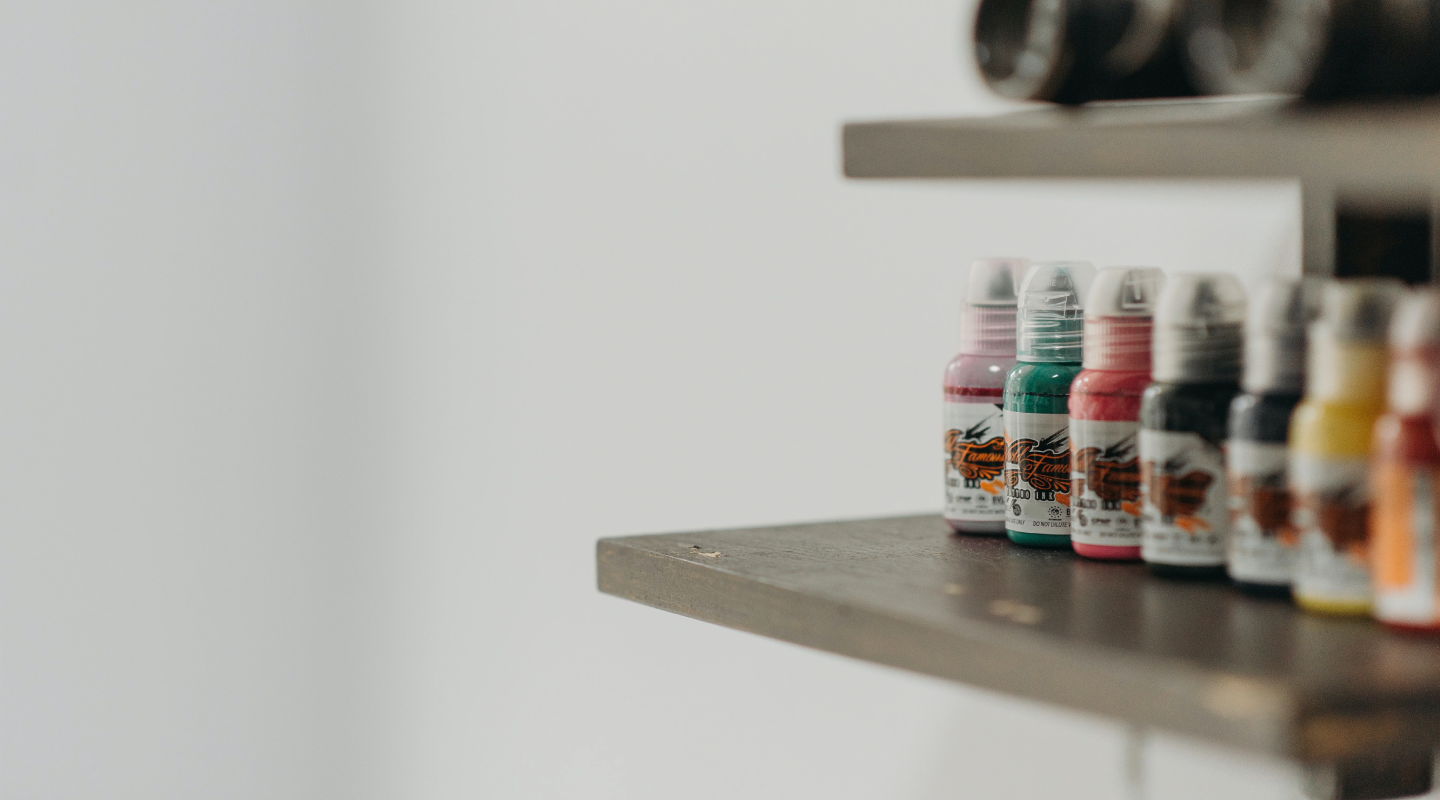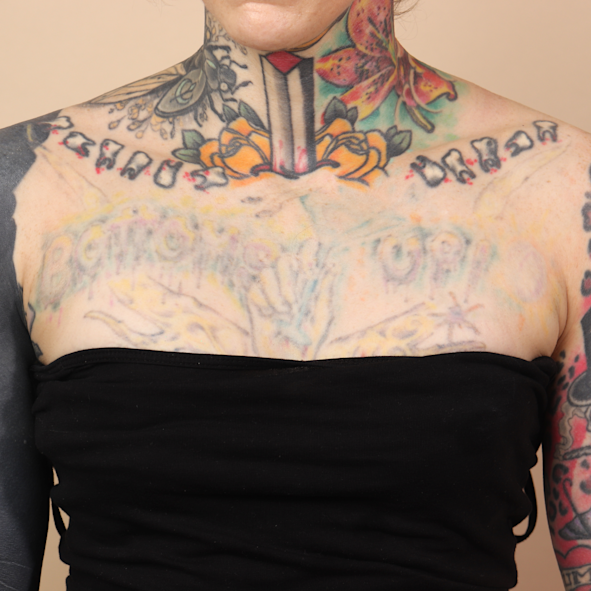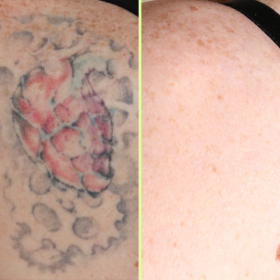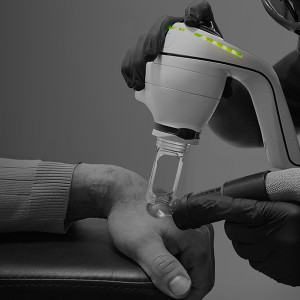
Among the misconceptions about laser tattoo removal, safely removing a color tattoo needn’t be a gray area anymore.
It is entirely possible to completely remove an unwanted color tattoo. This is everything you need to know about color tattoo removals, in a concise article that will dispel any of the falsehoods out there.
The LightSense® laser system offers 800nm (nanometer) laser treatments for color inks, built off the back of a decade of research with illustrious origins at Princeton University.
Talk to one of our experts to start your removal journey


Color laser tattoo removal in New York
What is a colored tattoo?
For the sake of clarity, when we talk about color tattoos we mean any body art design that is made using inks other than black. Tattoo artists have a wide range of color inks available to them, which they may blend and mix to create different effects, hues, shades, and tones.
While the end result can often be remarkably impressive, when it comes to removing an unwanted color ink tattoo there are certain important considerations. These have to do with the specific colors used and the technology available to the client. Fortunately for anyone based near New York, our very special one-of-a-kind laser removal technology has arrived.
What is colored ink made from?
The ink used in colored tattoos is typically made from a combination of pigments and a carrier solution. The pigments used in tattoo inks are finely ground particles of color that are suspended in the carrier solution.
We have spoken to a number of academics studying color ink tattoos. To read about how to safely pick a color ink tattoo, read our interviews with Matthew Kiszla and John Swierk.
This is how to safely choose color ink tattoos
NAAMA interviews: John Swierk expert on tattoo ink
How does color tattoo removal work?
Color tattoo removal works in the same way that black ink laser removal works, by accurately targeting the ink pigment with a low-energy laser beam. The difference is down to wavelength.
Verity, one of the tattoo removal experts at NAAMA, breaks down the process.
1. The colored ink particles are broken apart by the laser into tiny pieces.
2. Next, these smaller pieces are flushed out of the body through the lymphatic system.
3. This process is repeated over a series of sessions until the unwanted ink is cleared.
Darker colors absorb a broader spectrum of light. This means that most laser wavelengths are capable of penetrating darker inks, shattering them so that the body can flush them out. For that reason, the easiest tattoo colors to remove are the darker ones such as black, blue, green, and deep purple.
Lighter colors absorb only a narrow range of wavelengths and so can be difficult to remove without the right laser technology and corresponding wavelengths.
Can you completely remove a color tattoo?
It is possible to completely remove a color ink tattoo with the best picosecond lasers and corresponding wavelengths.
At NAAMA Studios in New York expert nurses are specially trained to operate the LightSense® laser system. It is the only laser we use and can only be accessed at our studios.
This means that our nurses have specialized skills and the opportunity to remove tattoos again and again with the exact same laser technology.
Practice makes perfect.
How long does it take to remove a color tattoo?
We are hesitant to give hard and fast rules about how long it takes to remove a tattoo. This is because, as you can imagine, tattoos vary widely from the small to large, and in terms of style and design.
Added to this, people’s immune systems vary and after selecting the right picosecond laser for color tattoo removal, it is the health of a client’s immune system that is most important in determining how effective a removal will be.
We ask anyone interested in removing a color ink tattoo to get in touch with our nurses for a brief discussion about how long it will take to remove a tattoo.

Color tattoo removal before and after with NAAMA's 800nm laser.
Color tattoo removal for darker skin tones
Color tattoo removal for darker skin tones
Before treating a new tattoo, nurses will use the Fitzpatrick scale to determine what kind of care should be taken with a client’s skin. The scale categorizes skin types from 1-6.
]We can only safely treat colored inks on Fitzpatrick 1-3 skin types. The risk is that if used to treat colored inks for Fitzpatrick 4-6 skin types, the laser could damage melanocytes, the skin cells that contain the pigment melanin, and cause scarring.
To be emphatically clear, nurses safely and responsibly use the LightSense® laser system alongside the Fitzpatrick scale to ensure that treatments are skin-kind.
For trends in breakthrough laser tattoo removal technology, here are NAAMA's top FAQs.
What is the best laser for tattoo removal?
What is the newest laser technology for tattoo removal?







